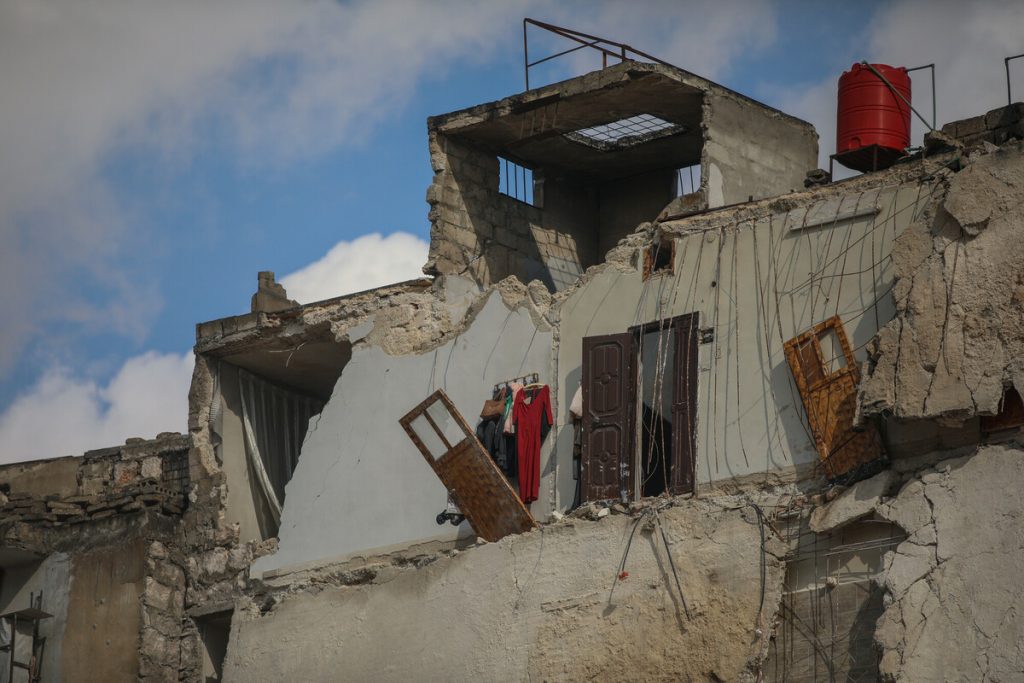Helping Syrian refugees with disabilities in Jordan’s camp Za’atari
April 2013 – Adapting to life in Jordan’s sprawling desert refugee camp, Za’atari, is hard for all refugees, but especially so for those with disabilities and special needs.
I met 12-year-old Sidra with her mother and brother on the main street near the camp entrance. They’d just gone to a hospital in the camp to register Sidra and request a wheelchair.
Sidra is paralyzed from the waist down and had to borrow a wheelchair from a neighbour to get to the hospital. Her mother, Fatima, told me the decision to leave Syria was largely because the fighting made it increasingly difficult to find medical help for her daughter. Even so, she said, her husband, a builder, remained behind because he felt he could still earn money for the family.
“The main reason we came here was for my daughter’s safety. In Syria, if it wasn’t for my daughter’s situation, we would not have left. Whenever there were attacks or bombings, people would go and hide in the shelter, but my daughter couldn’t do that.
“Someone would have to hold her and stay with her. Without God’s mercy, we would have been bombed and died long ago. Just the thought of my daughter being safe and secure here now is worth everything.”
The family hopes to move from their tent to a caravan that will provide more space and privacy. But their key concern is to get a chair so Sidra will have more independence to get around the camp.
“I’m very grateful for all the help we have received so far; the organizations here have been very good; they treat us and respect us very well,” Fatima said.
Waiting list for wheelchairs
Given there are more than 171,000 registered refuges at Za’atari, it’s a challenge for all agencies, struggling with funding, to provide the level of help needed.
Many families are on the waiting list for wheelchairs. Seventy-year-old Omayya is one of them. She suffered a stroke last year which left her paralyzed. The energetic grandmother, who used to manually harvest her fields, then cook and clean at home, now spends her day lying on a thin mattress in her prefabricated caravan.
“Going to the toilet is the hardest thing,” she confides. “I lie here helplessly all day alone unless someone comes to visit – like my daughter in law. If I could have a wheelchair, I think things would be much better. I feel very isolated, lying here on the mattress.”
Oxfam’s social mobilization, gender & accountability specialist, Jeff Silverman, regularly visits Omayya, bringing emergency diapers, and has referred her case to organizations that assist people with special needs, who might be able to offer extra help.
Oxfam’s own toilets and shower blocks, which are near completion in the camp, have been designed to provide disabled-friendly toilets and shower areas. The agency is also providing commodes for people like Omayya who are paralyzed or don’t have a wheelchair.
“People with special needs, or elderly people who have physical or medical disabilities, are among the most vulnerable,” Jeff said. “It’s hard for them to get services during distributions or to access water, sanitation or hygiene facilities.”
Risk of Isolation
With so many in the camp, it’s easy for people with special needs, especially if they can’t leave their tent or caravan to access help, to become isolated and almost invisible – out of sight from those who might be able to help.
Hamda, a 35-year-old mother of seven from Dara’a, is determined that won’t happen to her five year old daughter, Miriam, who was born paralyzed from the waist down and relies on diapers.
Miriam is a lively girl, crayoning in a colouring book when I visit her family caravan. Her mother says she also loves to sing. “If any school could accept Miriam, she would definitely go,” Hamda said. “But the school in the camp told me they don’t have the facilities to accept any handicapped children.”
“Words cannot explain our difficulties each day, how hard it is. Miriam is so young and doesn’t realize the problems for now.”
But Hamda says she won’t give up fighting for better opportunities for her daughter and seeking specialist medical help for her condition, which, she believes, could still be cured.
“I believe if she had a walker, it could help here. When she has a wall, she can walk a little on the back of her feet. There is hope. I don’t believe she is a hopeless case. “
Photo and blog by Caroline Gluck, a field-based Oxfam humanitarian press officer.

